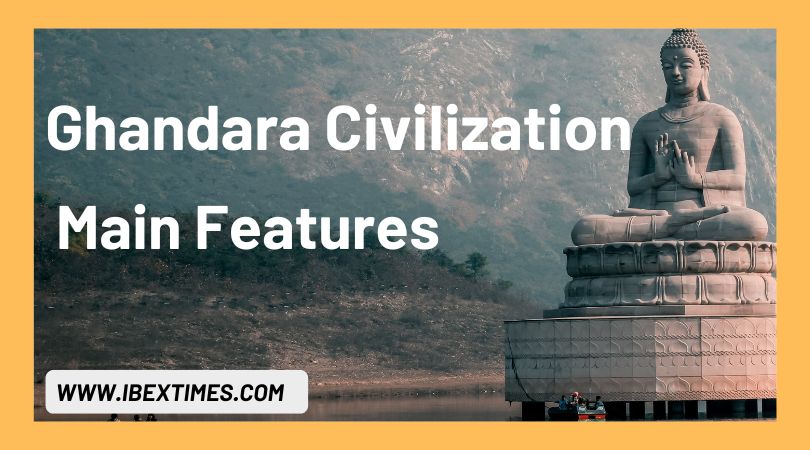This post describes salient features of the Gandhara Civilization that originated in the northwest of Pakistan, spread into all directions, and finally disappeared with the advent of Islam in the region.
What is the original location of the Gandhara Civilization?
Gandhara was the name of the region which included the Peshawar valley, Swat, Buner, Bajaur, and hills of Swat Valley situated in the north of today’s Pakistan. The region of Gandhara gave birth to one of the glorious and ancient civilizations of Pakistan known as the Gandhara civilization.
According to archeological studies, Gandhara Civilization emerged in 500BCE and achieved the greatest feats under different rulers. This region, however, stopped acting as the embodiment of the Gandhara Civilization by 1050 with the Muslim conquests of these regions. The Well known cities of the Gandhara Civilization included: Takshasila (Taxila); Purushapura (Peshawar) and Pushkalavati (Mardan).
The extent of Gandhara Civilization
With its emergence at Gandhara, the civilization started to spread subsequently in all directions. The regions out of Gandhara where this civilization spread included eastern parts of Afghanistan including Kabul Valley, Potwar plateau in Punjab, Sindh. During excavations, archaeologists have found the remains in the Gandhara civilization and their discovery of more remains continues to this day.
What are the salient characteristics of the Gandhara Civilization?
The main features of the Gandhara Civilization are as follows:
1. Buddhism as the dominant religion
Though various kingdoms reigned the region Gandhara between 500BCE and 1050 CE, the most common factor making them all part of one civilization was their great reverence for Buddhism. Furthermore, Buddhism is one of the major world religions with 506 million adherents founded by Siddhartha Gautama, the Buddha 6th century BCE in the Indian subcontinent.
2. Gandhara Art (Indo-Greek Art)
Studies suggest that Gandhara art is an amalgam of Indian and Greco-Roman art. The most notable among the Indo-Greek art is sculpture making which developed in the Gandhara region during the first and the seventh century.
Initially, the Gandharans used green phyllite and gray-like blue mica in sculpture-making. They started to use stucco, a cement-based plaster to manufacture the sculptures of Buddha. Furthermore, they painted the sculptures with gold or something golden-colored.
3. Architecture
The remains of religious structures i.e. stupas and monasteries act as the main sources that inform about the Gandharan architecture.
i. Stupas
Stupas are stone and sand-made structures with a cylinder-like base (drum) and a hemispheric dome. The dome contains a post with one or two canopies on it. They also contain large decorated false dormers. Moreover, they are surrounded by a specially made path circular path.
Buddhist use stupas as the place of meditation. Traditionally stupas are Buddhist sacred structures that contain the remains of Buddhist monks. The post supported by the dome and canopies on it is believed to represent the axis of the world. Buddhists practiced circumambulation (pradakhshina), an important Buddhist ritual and religious practice, by walking on the path around the stupas.
ii. Monasteries
Unlike stupa, a monastery is a complex of buildings containing double-storied living quarters for the Buddhist priests.
Remains of the world’s largest Buddhist monastery exist at Takht-e-Bahi Mardan in KPK, Pakistan. It was a complex of buildings featured by assembly halls, dining areas, and a courtyard and double-storied Buddhist living quarters. The complex also contained a portion of a temple with a number of stupas, a courtyard, and living cells. The remains also point towards a tantric complex containing meditations dark cells with very low openings.
iii. Building blocks and material
The people of the Gandhara Civilization used two important stones, the Kanjur, and the schist in the construction of temples, monasteries, stupas, houses, etc. The Kanjur is a fossil rock that can easily be molded into different shapes. The Gandharan sculpture makers have used these rocks in making Buddha figures and decorative items like brackets. They also used beautifully cut and rough stones joined by plaster in the construction of houses.
4. Cities and civic architecture
Unlike the uniformity in religious architecture, the civic structure changed from time to time as per the change in the dominant culture of the region. The towns that developed during Gandhara Civilization depict both organic and planned settlements. The main features of the planned cities included shops, villas, palaces, temples, gates, huts, pavilions, watchtowers, and fortified walls, etc.
5. Symbol of learning and human development
The Gandhara civilization is considered to be a symbol of human development in the area of human knowledge, religion, art, and history for the world. Modern-day. For instance, The modern city of Taxila was famous as a center of learning art, architecture, medicine, and religion.
According to the archeologists, the city acted as home to one of the world’s oldest recognized universities. Thousands of students from Greece, China, Srilanka, Syria, and other parts of the world got admission to the university at the early age of 16. The university offered admission in philosophy, politics, music, dance, mathematics, commerce, law, etc.
Moreover, the university catered to educational needs as per the attitude and aptitude of the learners. Instructing the art of hunting, archery, elephant lore, and warfare, science points towards the learning on basis of multiple intelligences.
It was as a result of the educational role of the Taxila university that India saw world-famous authors in local languages, physicians, political philosophers, thinkers, scientists, and statesmen, etc. who had graduated from the Taxila University.














